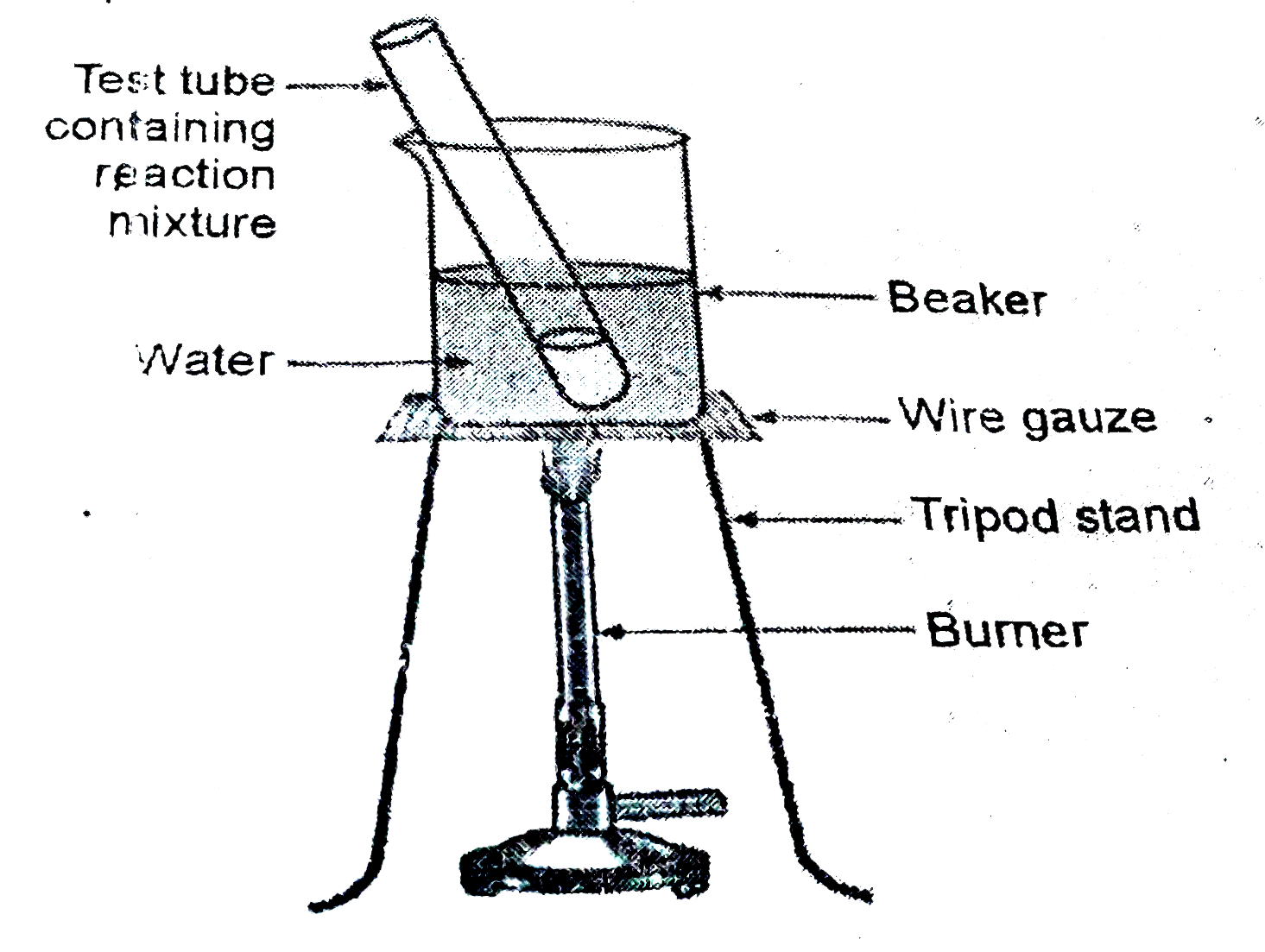(a) Distingusih between esterfication and saponification reactions with the help of chemical equations for each.
(b) With a labelled digaram describle in brief an acitivity to show the formation of an ester.
(a) Difference between esterification and saponification .
(b) Activity to show the formation of ester.
Take 1 ml of ethanol in a test tube.
Add few drops of conc in the mixture.
Heat the content on water bath for 5 minutes.
Smel the resulting fruity smelling ester is formed.

Similar Questions
Distinguish between esterification and saponification reactions of organic compounds with the help of the chemical equation for each. Write one use of (i) esters and (ii) saponification process?
View SolutionWith the help of a balanced chemical equation, show that B(OH)3 behaves as an acid in water.
View SolutionEthanoic acid reacts with sodium hydrogen carbonate to produce a salt 'X' and a gas 'Y'. Identify 'X' and 'Y' and write their chemical names. With the help of a labelled diagram describe an activity to confirm that the gas 'Y' is correctly identified by you. Also write the chemical equation of the reaction involved.
View SolutionWrite balanced chemical equations to show the formation of the following salts by neutralisation reaction:
NaClView Solution(a) Give a chemical test to distinguish between saturated and unsaturated hydrocarbon.
(b) Name the products formed when ethane burns in air. Write the balanced chemical equatioin for the reaction showing the types of energies liberated.
(c) Why is reactiion between methane and chlorine in the presence of sunlight considered a substitution reaction ?View SolutionIdentify the type of reactions taking place in each of the following cases and write the balanced chemical equation for the reactions.
(a) Zinc reacts with silver nitrate to produce zinc nitrate and silver.
(b) Potassium iodide reacts with lead nitrate to produce potassium nitrate and lead iodide.View SolutionWrite balanced chemical equations to show the formation of the following salts by neutralisation reaction:
BaSO4View SolutionIf reaction between A and B to give C shows first order kinetics in A and second order in B, the rate equation can be written as
View SolutionWrite the balanced chemical equations for the following reactions and identify the type of reaction in each case.
(a) Nitrogen gas is treated with hydrogen gas in the presence of a catalyst at 773 K to form ammonia gas.
(b) Sodium hydroxide solution is treated with acetic acid to form sodium acetate and water.
(c) Ethanol is warmed with ethanoic acid to form ethyl acetate in the presence of concentrated H2SO4.
(d) Ethane is burnt in the presence of oxygen to form carbon dioxide, water and releases heat and light.View SolutionWrite balanced chemical equations to show the formation of the following salts by neutralisation reaction:
Na2SO4View Solution

